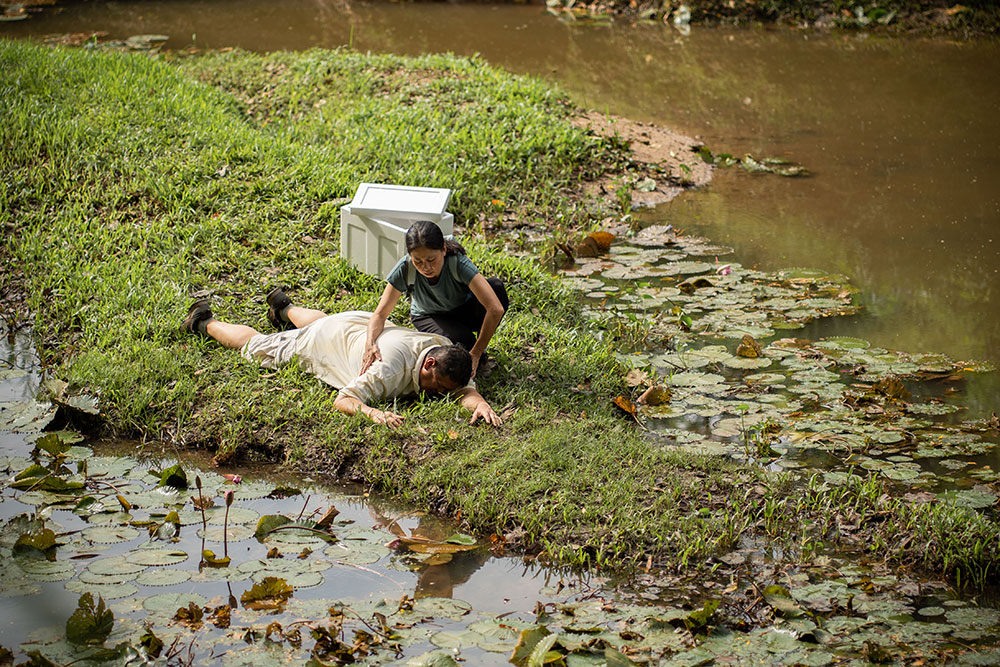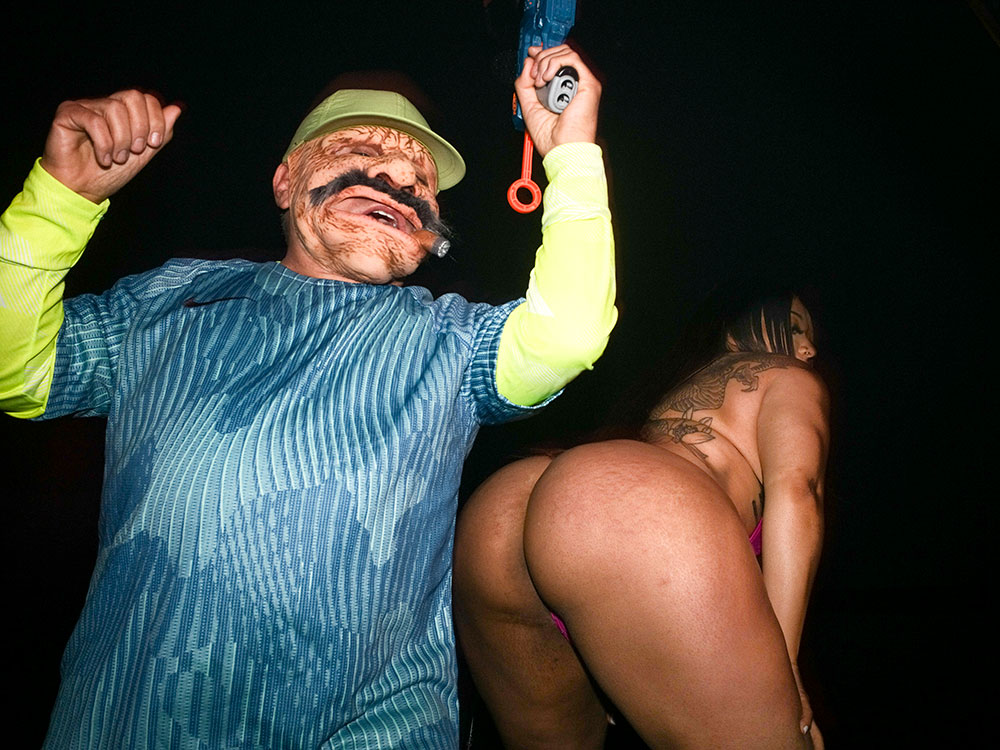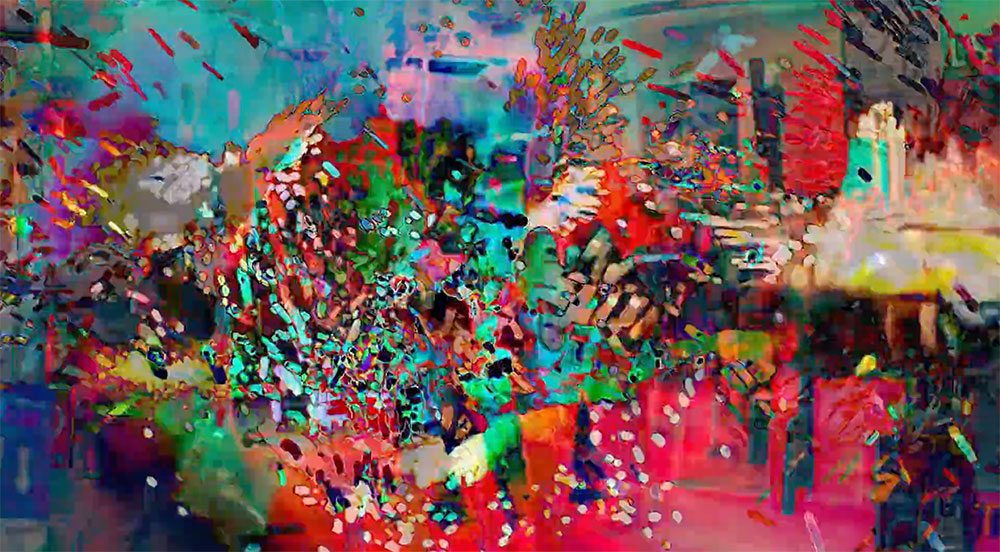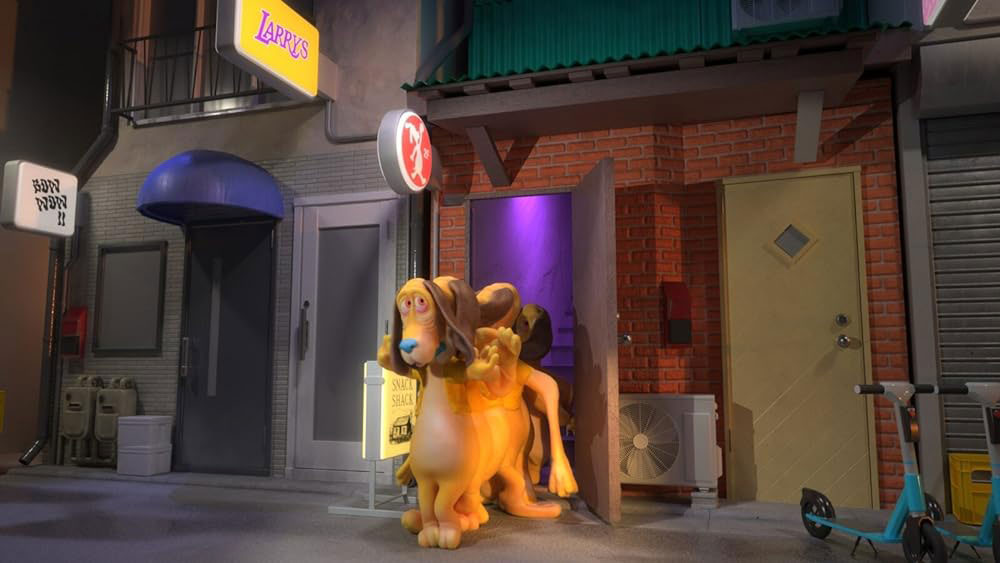Toward the end of last month, a friend invited me to introduce a program of short films—all filmed on 16mm—that were made by a group of filmmakers in their twenties. The films were thin on narrative but visually exuberant and formally daring. This group’s commitment to finding new ways of expressing themselves on film made me think about what defined a new director and a new film, especially in the context of the 53rd edition of New Directors / New Films, which was about to take over the Museum of Modern Art and Film at Lincoln Center for two weeks.
Attempting to diagnose commonalities between twenty-five films from all over the globe, made by filmmakers embedded in completely distinct social and historical contexts, is a fool’s errand. In fact, parsing out the singularities between the films at ND / NF in 2024 feels even more daunting as most, if not all, facets of art-cinema have been codified—films such as Dreaming & Dying (2023) and Cu Li Never Cries (2024) are inherently placed by critics in a continuum of contemporary East Asian slow cinema that inevitably brings to mind Apichatpong Weerasethakul; titles like Meezan (2023), Otro Sol (2023), and Intercepted (2024) satiate the needs of the experimental-documentary crowd; and the well-meaning, but occasionally irksome cult of moviegoers that conflate formal austerity with Bressonian genius (I am guilty of this too) can continue gathering around the work of Angela Schanelec’s contemporaries with films like A Good Place (2023) and Of Living Without Illusion (2023). Yet, all of these films contain small wonders that challenge their placement within these aesthetic categories, pointing to where the medium might go next.
Nelson Yeo’s feature debut, Dreaming and Dying, offers a cheeky riff on the romantic morality plays centered around middle-aged crises that are most associated with Éric Rohmer and more recently characteristic of Hong Sang-soo’s corpus. But, the film’s flirtations with magical realism (mermen and talking-fish) and climate change (a natural threat to its aquatic characters) place it in a world of its own. Although the film’s extended sequences in the Singaporean jungle—which emphasize the sounds of off-screen murmurs and chirps to make the environment appear as remote as possible—certainly evoke similar sequences in the work of Apichatpong Weerasethakul, Dreaming & Dying’s wonky zooms and sudden lurches into fantasy share more in common with the absurd work of Wong Ping whose animated fables often mix comedy with pointed critiques of capitalism to comment on widespread contemporary afflictions. Yeo definitely stretches himself thin in his attempt to fuse musings on middle-age malaise with a narrative that involves mermaids and is delivered through convoluted formal experimentation, but he occasionally stumbles into exciting cinematic moments, as in a tracking-shot of a man wandering off into the jungle as the film’s soundtrack exchanges its incessant chirping for loud snores—a funny, if irreverent commentary on the cinematic associations between jungles and dreams—and a furiously edited series of close-ups tracking a school of fish darting through a river.

Baloji Tshiani’s Omen (2023) tries to piece together disparate narrative threads with an overarching statement on Belgian-Congolese relations, but ends up making a 90-minute post-colonial reverie feel like a three-hour snooze. While Yeo’s formal flourishes are rarely justified, they do occasionally pair images and sounds to dazzling effect. Instead, Tshiani’s film entertains a fizzy approach to filmmaking that values vibes and lets its story, as well as its intended political message, play second-fiddle to startling images. Also steeped in a thorny political history, Pham Ngoc Lân’s Cu Li Never Cries expertly pieces together its narrative about a widow and her niece’s shotgun wedding, which mirrors their native Vietnam’s cycles of broken political promises and hopeful rebuttals. The film is an exquisite portrait of a fractured family learning how to reorganize itself; its alternately grim, heartwarming, and heart-wrenching scenes reflect the undefinable beat of human life in which happiness, sadness, and boredom all occasionally gesture at the sublime.
Of Living Without Illusion by Katharina Lüdin paints a different portrait of a feuding family—a more harrowing and hypnotic one. In it, Merit (Jenny Schily) tests the limits of her relationship with her girlfriend Eva (Anna Bolk) while rehearsing an emotionally taxing play in which she stars opposite her ex-husband. Merit’s unpredictable behavior becomes a talking-point for those around her, including her young son and his American girlfriend whose different interpretations of her actions test their own relationship—the networked swells of debate and understanding between the film’s characters offer a prismatic vision of familial love and strife. India Donaldson’s Good One (2024) also manages to transform a small story about a father-daughter hiking trip—with the father's dispirited old pal—into a smart study of family dynamics. Donaldson’s keen attention to minute gestures and emotional parlance belie the fact that Good One is only her first feature and is indicative of a career worth keeping an eye out on.
But woe is realism and woe is minimalism when cinema is dead and in the hands of edgelord par excellence Harmony Korine. Or so, he has said: “that one thing [cinema] is dying, and something new is being born right now.” I attended EDGLRD’s (pronounced “edgelord”) screening of AGGRO DR1FT (2023) at the Bushwick music-venue Elsewhere, or as the PR-office put it: “Harmony Korine’s one-night-only experiential event at Elsewhere.” There, I was met by an entourage of EDGLRD personnel dressed in black and interacted with an even larger crowd of Korine superfans, including a silver-haired man in a suit who reflected the PR-office’s statement when he said, “I feel like that’s what we’re going into… An experience instead of a film.”

As I waited for the doors to the event to open, I talked to a few attendees. The 28-year-old Finn Lloyd, who had already seen the film at the New York Film Festival the previous year but wanted to make sure his buddy caught it, told me, “It’s very experimental… A bunch of people walked out at Lincoln Center… But here it’ll be a totally different experience.” His buddy, the 29-year-old David Ginsburg, chimed in: “Sounds like a movie that’s trying to be a party.” When I asked them if it was worth the $80 admission fee, David quickly responded, “If Harmony DJs with the horns, I’m set.”
Inside, the venue had been filled with fancy foldable chairs—they had a bean-bag back-support—and those in attendance were encouraged to buy drinks while guests poured in. Everyone looked like they were wearing some variation of Online Ceramics. I bought a tall-boy ($14) and sat down while a VJ amped up the audience: “How you feeling?!” was met with a half-hearted hurrah and “You ready for AGGRO DR1FT?” with a silence that prompted the VJ to repeat the question. Throughout this entire time, the EDGLRD logo flickered on the screen in an endless loop—Fetty Wap’s “My Way” and Young Jeezy’s “Ballin’” filled the room.
Like Lloyd, I had also caught AGGRO DR1FT at NYFF a few months back. I watched the film at a 4 P.M. press screening. Bradley Cooper’s Maestro (2023) screened before it and for reasons I cannot explain, his Leonard Bernstein biopic hosted a full-house while Korine’s genre-defying work was ill-attended. I had fun with AGGRO DR1FT, which makes interesting enough use of infrared camera-work while gesturing at real contemporary afflictions; early on, Jordi Mollà decries, “The old world is dead, we have been flattened by a great force.” There’s something alluring, if profoundly stupid, about Korine’s latest work as a postmodern object that takes its cues from TikTok and video-games while playing with familiar crime-film tropes. I don’t think the film, or Korine, quite know what to do with its formal components—AI imagery, glitchy visuals, repetitious dialogue—but their very presence transforms AGGRO DR1FT into a contemporary curio.

My second viewing of AGGRO DR1FT was not as fun—the “gamercore” look got stale pretty quick and the film’s story about the world’s best assassin isn’t exactly riveting. When the film ended, the venue was transformed back into a dancehall so that AraabMuzik and Harmony Korine could DJ. As I waited for their performances to begin, I ran into George Figueroa, 31, who I had talked to earlier because he was the first person in line. He had purchased an EDGLRD hoodie and told me, “I was right on the money—he used AI technology. The movie was chaotic.” After a brief pause, he added, “I’m 30/50 on the whole AI thing ‘cause at some point, you gotta feel bad for the illustrator.” I nodded and told him the movie was fun. AraabMuzik then proceeded to play dubstep and Harmony Korine offered up some trap remixes of System of a Down’s “Chop Suey” and Eiffel 65’s “Blue (Da Ba Dee).” A few strippers had been brought in and Korine did DJ while wearing a 3D-printed demon mask. I guess the idea was that if cinemas felt more like clubs, then more people might attend them. I’m not too convinced by that argument, but maybe I’m just not that hip.
While AGGRO DR1FT toyed around with digital images to varying degrees of success, the short films at the Millennium Film Journal’s most recent screening at Anthology Film Archives made excellent use of 3D-modeling technology in their representation of contemporary anxieties. Takeshi Murata and Christopher Rutledge’s Larry (2023, pictured at top) is a four-minute short about a droopy-eyed digital canine who is forced to play basketball despite the glaring exhaustion on his face. As he dribbles down the court, his body dissolves and is routinely replaced by doppelgängers, leaving behind a trail of digital corpses with each step he takes. Seeing Larry get copied, deleted, and pasted over and over again made me think about the status of the modern-day gig-worker who is tragically considered infinitely replaceable by many. Aria Dean’s Abattoir, U.S.A.! (2023) makes use of the 3D computer graphics tool Unreal Engine to model an empty slaughterhouse. Alternately mesmerizing and distressing—and always haunting—her film showcases a sophisticated use of modern technology, as well as a commitment to wrestle with the politics of images at a moment when un-real images have triggered a mass delusion.
An uncertainty about the value of images was palpable in the short films that made up the 11th Annual New Year / New Work Film Festival at the Film-Makers’ Cooperative. These short films’ use of superimpositions, frantic editing, and scratch-work meant there were barely any stable images in the program. Rrose Present’s Proves de Foc Amic (2024) even describes itself as an “audiovisual gun” during its end credits. The film’s extreme use of superimpositions—which appropriately depict the correfoc (“fire-run”) festivals in which people dress up as devils and light up fireworks—is so intense it feels violent. Present dedicated her film to “Beldina, a girl [she] met in Sarajevo after the war, and to all the people who told [her] the horror of the nights waiting for the enemy fire that illuminated the city.” It’s a distressing work of filmmaking, but an effective one too—it’s surely the closest any film has come to embodying the overwhelming sensation of listening to a Moth Cock track.

John Dawson’s Soup Mix (2024) and Violet Cheverez’s Collage4 Diary (2024) also make use of frenetic editing and layered images to dizzying effect, producing an avant-garde pair of Adult Swim bumpers. The Shrink (2024) by Mila Rae Mancuso entertains a superimposition game by embedding images within its frames and accompanying them with different voice-overs. Since the different voice-overs are all rather tedious, its visual razzle-dazzle becomes the film’s only hook. At one point, someone says, “My shrink and I both like Nabokov. If I were a shrink, I wouldn’t tell my patient I liked Nabokov.” This point isn’t elaborated upon, but it is representative of the festival’s emphasis on intertextuality. In Queer Dream Triptych (2024), Matt McKinzie re-edits Donald Fox’s Omega (1970) and references both Patti Smith and Kate Bush. Chapeau Soft Geometry Liquid Commodity (2024) by Anne Katrine Senstad re-interprets a text by the French artist Robert Filliou, The Mind We Live In (2024) by Catalina Giraldo riffs on Basho, and Sean Neace’s Voyeurisms very explicitly references Blue Velvet (1986). Although all of these invocations demonstrate these filmmakers are well-read and well-watched, none of them are particularly inventive.
As far as the implementation of text in filmmaking goes, Naval Cassidy’s Words Per Page (2024) makes the most of words onscreen at this festival. The film, which ostensibly centers around the filmmaker’s trip to Canada, features sentences scrolling from left to right against a black screen. Then, the sentences speed up and their meaning becomes indecipherable; its letters assume the status of symbols and present themselves purely as visual elements within the frame. When Cassidy decides to fill the rest of the screen with letters—now scrolling right to left as well as up and down—he confirms his confidence in images above textual citations. His inclusion of an apology at the end of his film in case it didn’t live up to viewers’ “expectations” might belie Cassidy’s confidence, but the work speaks for itself in spite of its indecipherable sentences.
Feedback Loop is a column by Nicolas Pedrero-Setzer reflecting on each month of repertory filmgoing in New York City.




